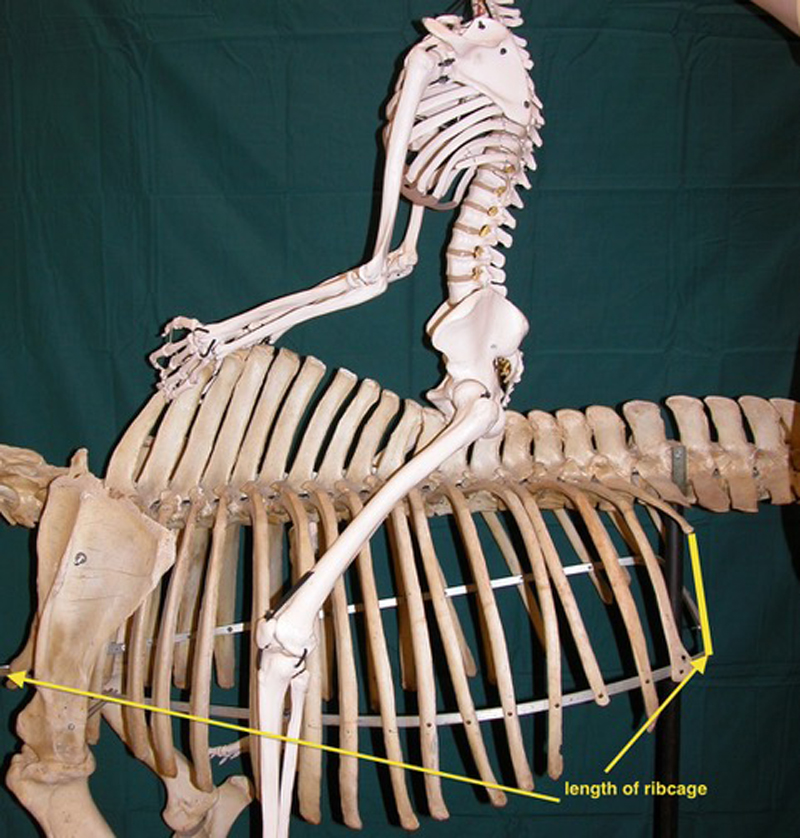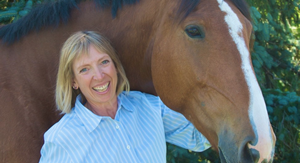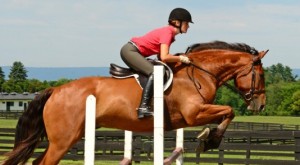Did you know that the horse is human skeleton is actually quite similar?
Well it is. Yes, there are some major differences; the size of horse’s bones are much larger than yours, the proportions are different and we each have a few that are unique. But overall our skeleton and the horse’s skeleton are a lot alike.
In this series of articles on Comparable Parts, I am going to examine the similarities and differences between our two skeletons. Sometimes I will take individual bones while in other cases we will look at a collection of bones. The idea is to help you recognize, name locate particular boney landmarks on both you and your horse and understand how the bones determine movement in each species. Hopefully you will find this information useful when it comes to answering Quiz questions. Perhaps more importantly it will help you understand your horse and how you can work together in whatever equestrian discipline you enjoy.
Let’s start with the overall number of bones each species has. Did you know that horse’s and humans on average only vary in total number of bones by 1? Horses average 205 bones and humans average 206. We have more bones when we are born, about 300 but some of these bones fuse together as we get older. Our skull for instance is made up a number of different bones. A horse’s head is also made up of several bones that fuse together to form what we think of as the skull.
Bones are extremely important for living here on earth due to gravity. Gravity is the force that pushes you towards the earth. Gravity is what causes you to go down when you get off your horse and what makes jumping exciting. If it wasn’t for gravity, jumping a big fence would be boring. There is no thrill without the sense of leaving the earth behind for a brief moment.
Bones help us resist gravity, protect our internal organs and allow us to move over the earth. It’s the joints, the place where two or more bones meet, that let you and your horse move gracefully. Have you ever seen someone walking around on stilts? They look very tall but quite stiff and awkward in their movement. That’s because there are no joints in the stilts. Joints provide for graceful movement and dexterity. Imagine typing on your laptop with only one joint in each finger? Just for a moment try to send an email without bending your fingers. I think you will appreciate your joints much more after that. Having joints is great but if you don’t have anything to keep the bones next to each other they will simply fall apart, that’s the job of ligaments.
Next time you roast a whole chicken for dinner, take a look at the structure as you carve it up. Notice the tough whitish stuff at the end of the bones in the chicken leg. This material is cartilage. Cartilage cushions the bones so that they don’t grind together. The end of your nose is made of cartilage, which is why it is flexible. Your horse also has cartilage at the end of his nasal bones. That’s why it is important to make sure your noseband is properly adjusted. If your noseband drops down onto the cartilageous part of your horse’s nose it can be quite uncomfortable.
Cartilage cushions the joints but they do not always hold them together. That is the job of ligaments. Ligaments are tough fibrous tissue connecting bone to bone. Remember when you tour the chicken leg apart to see the cartilage? You had to tear the ligaments to get to the ends of the bones. Ligaments are very tough and have very little blood supply. That’s why a ligament injury, say in the stifle, is so serious. It takes much longer for a ligaments to heal than muscle or bone injuries due to the lack of blood supply.
The ligaments have a very serious job to do. They have to keep the bones in place. Often the ligaments have to keep two bones together so that there is virtually no movement in the joint. Take your horse’s pelvis for example. The pubic region is there the two halves of his pelvis meet. The ligaments hold this area together which allows the horse to push himself forward with his hind legs. If her were to fall on ice and tear these ligaments he would have great difficulty standing or walking. Ligaments have a lot of responsibility. They have to hold bones together and restrict movement so that joints aren’t over extended. So how does all this boney mass move? That’s the job of your muscles. They are the brawn of the body.
Muscles are really quite dumb. Without the nervous system they wouldn’t do anything at all, just sit there. Nerve impulses cause muscles to contract, moving the bones so that we can run and our horse’s can jump. Muscles are attached to bones by tendons, fibrous tissue going from muscle to bone. Coordinating muscular contraction is the job of the brain and nervous system. If you had to think about all the muscles that go into standing up from a chair you probably would never get up. Your nervous system does this for you all the time without you ever having to think about it. This is also true for your horse. Pretty amazing when you think about it isn’t?
Well that’s all for this installment. There is a brief quiz at the end so you can test your newfound knowledge. In future installments we look at specific bones you and your horse’s skeleton share.
Quiz:
1. What is the name of the fibrous tissue that connects bone to bone?
2. How many bones are in the horse’s skeleton?
3. The bone cushioning fibrous tissue is called what?
4. Muscles act on their own T or F?
5. How many bones in the human skeleton?
6. Tendons connect muscle to what?




